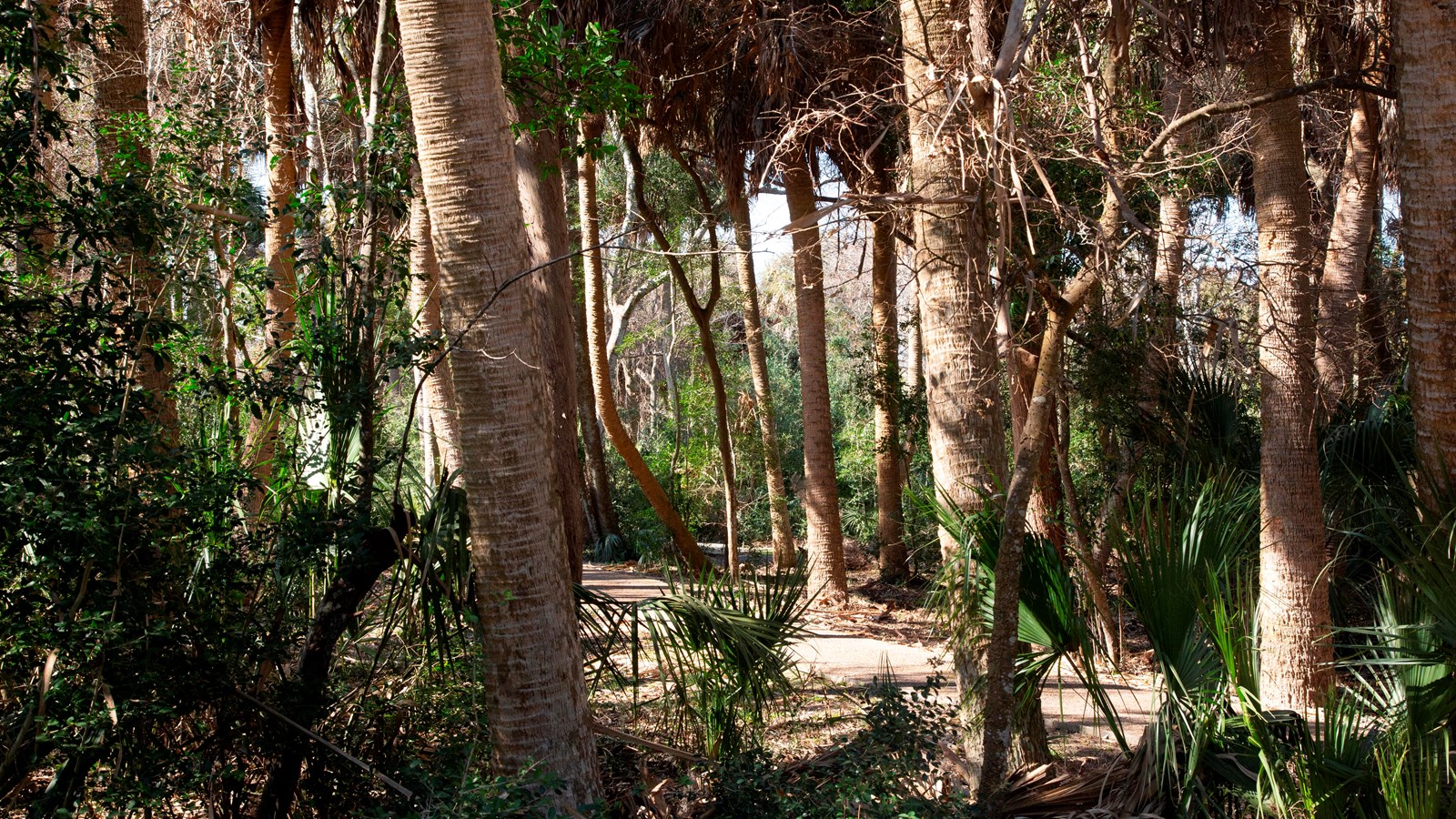Last updated: May 14, 2024
Place
Cockspur Island

NPS Photo
Accessible Rooms, Cellular Signal, Historical/Interpretive Information/Exhibits, Information, Picnic Table, Restroom, Restroom - Accessible, Scenic View/Photo Spot
Cockspur Island has been important since the founding of the Colony of Georgia due to its strategic location, just inside the mouth of the Savannah River. Spring tides covered most of the island monthly. Several marsh islands will later join Cockspur Island as the result of necessary dredging of the Savannah River to accommodate modern shipping.
Early Fortifications
The first military use of Cockspur was in 1761 with the construction of an earth and hewn log fort near the confluence of the South Channel and Lazaretto Creek. Nearby, on Tybee Island, was a quarantine station (Lazaretto) and customs checkpoint. Fort George protected both the entrances to the city and enforced quarantine and customs regulations. The archaeology of Fort Pulaski has led to many discoveries of the fort's history.
During the Revolutionary War, the Patriots, dismantled Fort George because of its exposed location. However, the British established a safe haven for Loyalists on Cockspur. When the Royal Governor, Sir James Wright, fled there with the great seal of the Province, Cockspur became for a short time capital of the colony of Georgia.
Once the Revolutionary War ended, the new United States would build a fort on the site of Fort George in 1794-95. This new fort was constructed very much like Fort George (earth and log) and was named for the Revolutionary War hero, General Nathaniel Greene. The life of Fort Greene would be short and tragic. In September 1804 a hurricane swept across the island washing away all vestiges of the fort.
Construction of Fort Pulaski
Assigned to assist Major Babcock was a recent graduate of West Point, Second Lieutenant Robert Edward Lee. Lieutenant Lee's job was classified as "acting assistant commissary of subsistence". The labor force would consist of white and black, slave and free, who lived in the workers village. A large pier was constructed on the North Channel to handle the arrival of supplies from ports north and south. Work continued until 1847 when the new fort, now named Fort Pulaski, was finally finished.
Post Civil War
After the Civil War, Fort Pulaski was unoccupied and neglected. The War Department made Fort Pulaski a national monument in 1924 by presidential proclamation of Calvin Coolidge. The 1930s saw new activity on the island with the arrival of the Civilian Conservation Corps (CCC). The CCC worked to rehabilitate Fort Pulaski and the surrounding landscape, including rebuilding the island's early drainage system and wet ditches.
Cockspur Island saw further activity as a section base for the US Navy during World War II. Following the war, the island and historic fort again were under the watch of the National Park Service. Today the island is open to visitors looking to explore pristine marsh land, historic military engineering, and a diverse collection of native flora and fauna.
